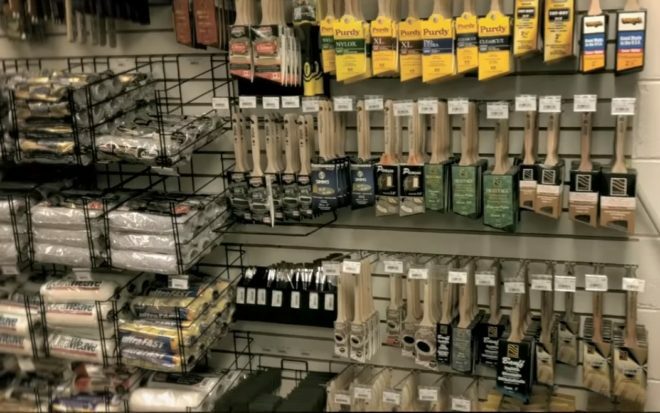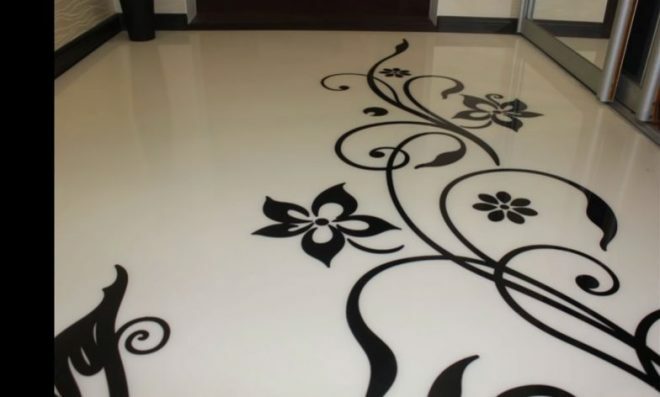- Types of electric underfloor heating
A warm floor is not a necessary thing, and at the same time it increases energy consumption, and the heating system itself and its installation require investments. The question arises: Do you need a warm floor in the kitchen? In our opinion, in many cases it is really needed and worth its money.
A warm floor in the kitchen is necessary in case:
- You plan to add a loggia to it and want to equalize the temperature in two parts of the room.
- You want to tile the floor with a tile or laminate, while a child lives in the house.
- You and your family like to walk barefoot.
- You live above the basement on the first or second floor.
- If the apartment is heated not well enough.
- Or if you just want to make the kitchen more comfortable.
A warm floor in the kitchen may not be particularly needed (except in the off-season), if:
- The apartment is well heated, and on the floor there is a cork, linoleum or some kind of wooden covering.
- The windows of the kitchen face south or south-west, which means that in summer most of the time the room is flooded with sunlight.
- You and your family prefer to walk around the house in slippers.
- The house does not and does not plan the appearance of a small child.
So, the main advantage of this heating system is comfort. Next, consider what types of warm floors are, their pros and cons, and how to minimize the cost of creating them.
Types of electric underfloor heating
Having decided on laying the warm floor, first of all you need to choose the system suitable for your case. Electric floor heating can work on the principle of convection (cable floor heating) and infrared radiation (film and rod system). Let's look at all kinds of electric underfloor heating in more detail.
.Cable
In general, cable heating of the floor can be called obsolete, but still it is in demand. Cable warm floor can be different: resistive and self-regulating, two- and single-core, shielded and Unshielded, with Teflon insulating or PVC coating, in the form of mats or self-contained cable, powerful or low-power.
- Most often, for heating a kitchen in a city apartment, choose resistive systems with a two-wire shielded cable of low power in the form of mats.
For heating cold kitchens, for example, on the veranda of a house or kitchen with a connected loggia, it is worth choosing a powerful system.
As for the choice of coating, then it's up to you - the Teflon coating is safer and thinner PVC, but the system costs 15-20% more.
Cable floor heating is a part of the "cake" with insulation, a rough screed and aluminum foil, which directs heat into the room. The heating cable is filled with 3-4 cm of cement-sand screed, after which the finishing coat is laid.
Laying of cable infrared warm floor in the form of mats
Pros:Can be laid under any floor covering, including tiles.
Minuses:
- Since the cable system is laid directly into the concrete screed, it is only available for those who plan to carry out major repairs.
- Another drawback - if one cable section breaks, then the entire system will fail.
- Cable floor heating can be installed only where there is no heavy furniture, for example, a kitchen set or a sofa. Otherwise, in places of pressure, the cable will overheat and, in the end, burn out.
- Several times the heat loss compared to infrared heating systems. Heat in this case rises to the ceiling and "accumulates" there. This means that most of the energy is wasted.
- It consumes more electricity than infrared film or rod warm floors.
A detailed instruction on laying the cable heating mat with your own hands is presented in the following video:
Film
The film floors themselves are classified according to the materials used for the film. It can be:
- Bimetallic compound based on aluminum or copper.
- Carbon film with copper and carbon elements.
Pros:
- It spreads directly under the coating (linoleum, laminate, parquet) without screed. This means that you will not need to raise the floor level and carry out major repairs.
- Saves up to 20% of electricity consumption.
- Due to the parallel connection of the heating elements, the failure of one of the sections does not lead to a breakdown of the entire system.
- The loss of heat is several times less than in the case of cable floors.
Minuses:
- The film warm floor is intended only for "dry" laying.
- The film floor is not suitable for tile mounting.
- You can install it only where there will not be heavy furniture (because of the danger of overheating).
How to calculate how much film warm floor you will need to buy to heat the kitchen, and also how to make a warm floor with this system with your own hands, we suggest looking at the following video:
Rod (carbon)
This is another type of infrared warm floor, which is a mat with a carbon rod, connected together by copper cables.
Rod infrared floor is standard and increased power. Powerful warm floors are intended for heating of cold premises, for example, attached loggias, verandas or those that are located above the basement or on the first floor of the building. Floors of standard capacity are suitable for all other rooms.
Core carbon heated floor under the tile
Pros:
- This heating system is suitable for any coating, from tiles to linoleum.
- Evenly distributes heat, which saves up to 60% of electricity consumption.
- The core heat floor is self-regulated, which also saves energy significantly (the areas under the furniture are automatically heated less, and at the window or exit to the balcony more).
- Mats with carbon rods are durable (20 years are guaranteed on the floors from Unimat).
- Does not fail if one of the sections breaks (due to the parallel connection of the heating elements).
- The loss of heat is several times less than in the case of cable floors.
- The system heats up quickly - in about 2-3 minutes.
- Stacking the infrared rod system does not greatly thicken the floor. In the finished form, its thickness can be only 3 cm.
- This is the only kind of warm floors, on which you can put heavy furniture, not being afraid of overheating.
Minuses:
- It requires major overhaul, as it is laid down on a "wet principle".
- You can lay the carbon heated floor with your own hands, but it is better to entrust the installation to professionals, since the rods are very thin and fragile.
- You can run into a fake.
How to mount the carbon warm floor with your own hands, see the following video from the manufacturer Unimat.
. Loading...
Read also:
- . Sex is known in comparison: we choose a floor covering for the kitchen.
- . The floor is in the kitchen.
- . All about the ceramic floor tiles in the kitchen.
- . Parquet board in the kitchen - all the pros and cons.
- . All about linoleum for the kitchen - we compare, choose and steal with our own hands.
- . Cork flooring - 99% ideal floor covering for the kitchen.


